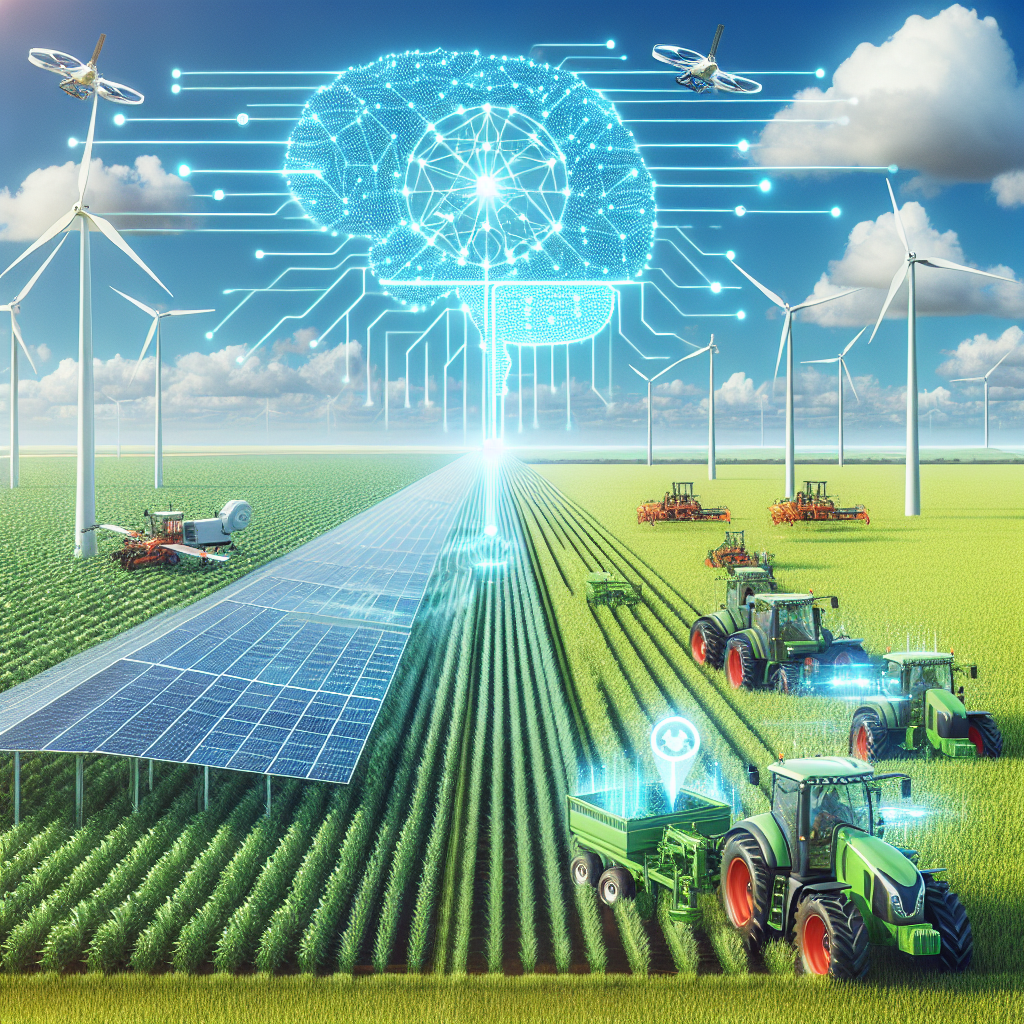Agriculture is a vital industry that sustains human life by providing food, fiber, and other resources. However, traditional agricultural practices have come under scrutiny for their impact on the environment, including the depletion of natural resources, pollution, and greenhouse gas emissions. In recent years, there has been a growing interest in leveraging technology, particularly artificial intelligence (AI) automation, to make agriculture more sustainable.
AI automation refers to the use of artificial intelligence algorithms and robotics to perform tasks that would typically require human intervention. In agriculture, AI automation can be used in a variety of ways to improve efficiency, reduce waste, and minimize environmental impact. From precision farming to automated harvesting, AI automation has the potential to revolutionize the way we produce food and manage natural resources.
One of the key benefits of AI automation in agriculture is its ability to optimize resource use. By using sensors, drones, and other technologies to collect data on soil quality, weather patterns, and crop health, farmers can make more informed decisions about when and where to plant, irrigate, and fertilize. This precision farming approach can help reduce the use of water, pesticides, and fertilizers, leading to cost savings and environmental benefits.
Another advantage of AI automation in agriculture is its potential to increase productivity. By automating tasks such as planting, weeding, and harvesting, farmers can save time and labor, allowing them to focus on more strategic aspects of their operations. This can lead to higher yields and greater profitability, helping to ensure the long-term viability of the agricultural sector.
Furthermore, AI automation can help farmers adapt to the challenges of climate change. By monitoring weather patterns and soil conditions in real-time, farmers can make adjustments to their practices to mitigate the impact of extreme weather events, such as droughts and floods. This resilience is crucial for ensuring food security in the face of a changing climate.
In addition to its environmental and economic benefits, AI automation in agriculture can also improve food safety and quality. By using sensors and AI algorithms to monitor crop health and detect pests and diseases early, farmers can take proactive measures to prevent contamination and ensure that their products meet regulatory standards. This can help build consumer trust and confidence in the food supply chain.
Despite its potential benefits, AI automation in agriculture also raises concerns about job displacement and the concentration of power in the hands of a few large corporations. As machines take over tasks that were previously done by human labor, there is a risk that farm workers could lose their jobs, leading to social and economic disruption in rural communities. Additionally, the high cost of AI technology could create barriers to entry for small-scale farmers, further consolidating control of the industry in the hands of a few wealthy agribusinesses.
To address these challenges, it is essential to ensure that AI automation in agriculture is implemented in a way that is inclusive, equitable, and sustainable. This includes investing in education and training programs to help farmers adapt to new technologies, supporting small-scale farmers with access to affordable AI tools, and promoting policies that prioritize environmental stewardship and social welfare.
In conclusion, AI automation has the potential to play a crucial role in making agriculture more sustainable by optimizing resource use, increasing productivity, and enhancing resilience to climate change. However, it is essential to address the social, economic, and ethical implications of this technology to ensure that it benefits both farmers and the environment. By working together to harness the power of AI automation responsibly, we can create a more sustainable and resilient food system for future generations.
FAQs:
1. How does AI automation improve resource efficiency in agriculture?
AI automation in agriculture uses sensors, drones, and other technologies to collect data on soil quality, weather patterns, and crop health. This data allows farmers to make more informed decisions about when and where to plant, irrigate, and fertilize, reducing waste and optimizing resource use.
2. What are the potential benefits of AI automation in agriculture?
AI automation in agriculture can increase productivity, improve food safety and quality, and help farmers adapt to the challenges of climate change. It can also reduce environmental impact by minimizing the use of water, pesticides, and fertilizers.
3. What are the challenges of implementing AI automation in agriculture?
Challenges of implementing AI automation in agriculture include job displacement, the concentration of power in the hands of a few large corporations, and the high cost of technology. It is essential to address these challenges to ensure that AI automation benefits both farmers and the environment.
4. How can AI automation in agriculture be made more inclusive and equitable?
To make AI automation in agriculture more inclusive and equitable, it is important to invest in education and training programs for farmers, support small-scale farmers with access to affordable technology, and promote policies that prioritize environmental stewardship and social welfare.

